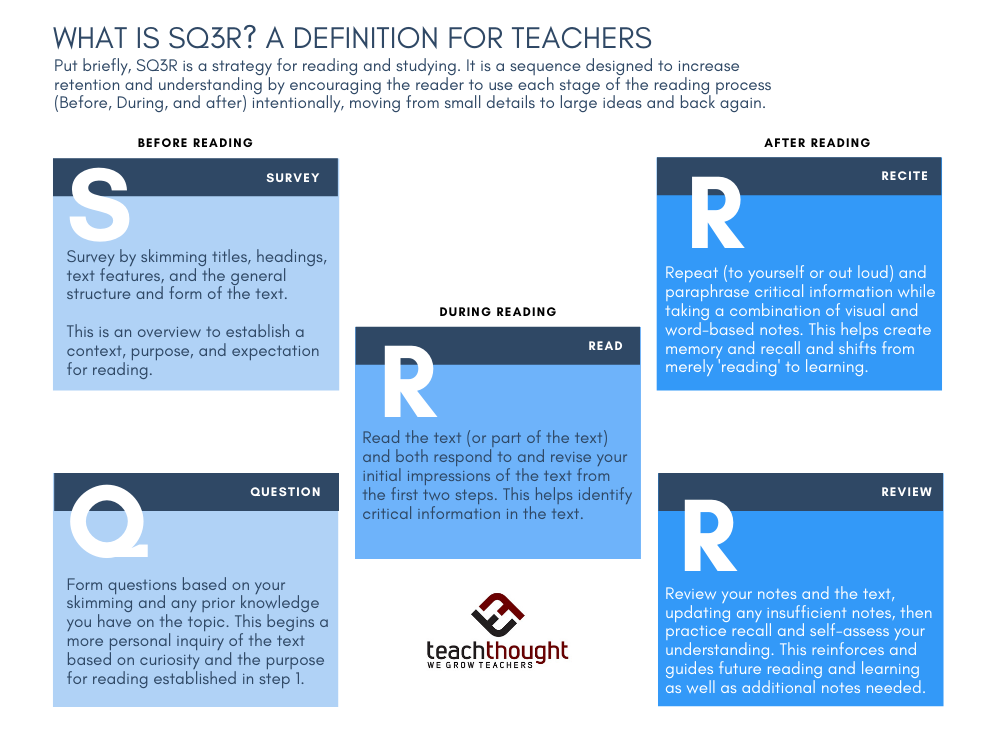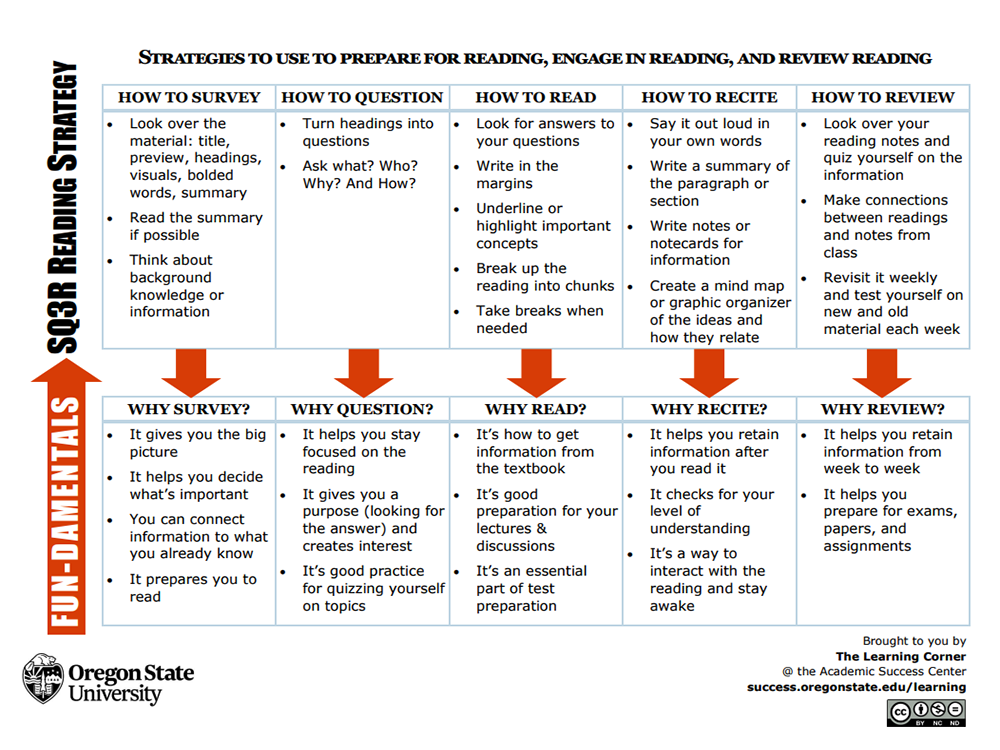
SQ3R? A Definition For Teachers
by TeachThought Staff
What is SQ3R?
Put briefly, SQ3R is a strategy for reading and studying. It is a sequence designed to increase retention and understanding by encouraging the reader to use each stage of the reading process (Before, During, and after) intentionally, moving from small details to large ideas and back again.
By setting a purpose for the reading, asking questions, taking notes, and reviewing both notes and text in relation to one another, readers are able to delve more deeply into a text compared to merely reading or even reading and responding (in a learning journal, for example). Dartmouth University helpfully captures each step by summarizing the steps of the SQ3R strategy below.
The 5 Steps Of SQ3R
- Step 1: Survey
- Skim through the book and read topical/sub-topical headings and sentences. Read summaries at the end of chapters and books. Try to anticipate what the author is going to say. Write these notes on paper, then look it over to get an overall idea.
- Step 2: Question
- Turn paragraph headings into questions (e.g. “Basic Concepts of Reading” to “What are the Basic Concepts of Reading?”). Write these questions out.
- Step 3: Read
- Read with alertness to answer the questions you came up with. Write notes, in your own words, under each question.
- Step 4: Recall
- Without looking at your books or notes, mentally visualize, in your own words, the high points of the material immediately upon completing the reading
- ** More time should be spent on recall than reading
- Step 5: Review
- Look at your questions, answers, notes and book to see how well you did recall. Finish up with a mental picture of the WHOLE*
Adapted from F.P. Robinson. Effective Study. New York: Harper and Bros. 1948. Chapter II
Further, The Learning Corner at Oregon State offers more detail and strategies for each stage of the SQ3R process as well as clarifying the purpose of each step. We’ve retyped the questions and text below the image in case the image is somehow inaccessible or illegible.

How To Survey
Look over the material: title, prevoew, headings, visuals, bolded words, summary
Read the summary if possible
Think about background knowledge or information
How To Question
Turn headings into questions
Ask What? Who? Why? How?
How To Read
Look for answers to your questions
Write in the margins
Underline or highlight important concepts
Break up the reading into chunks
Take breaks when needed
How To Recite
Say it out loud in your own words
Write a summary of the paragraph or section
Writing notes of notecards for information
Create a concept map or graphic organizer of the ideas and how they relate
How To Review
Look over your notes and quiz yourself on the information
Make connections between readings and notes from class
Revisit your notes and the text weekly (or more frequently) and test yourself on new and old material each week
Why Survey?
It gives you the big picture
It helps you decide what’s important
You can connect information to what you already know
It prepares you to read
Why Question?
It helps you stay focused on the reading
It gives you a purpose (looking for the answer) and creates interest
It’s good practice for quizzing yourself on topics
Why Read?
It’s how to get information from the text
It’s good preparation for your lectures and discussions
It’s an essentiual part of the test preparation
Why Recite?
It helps you retain information after you read it
It checks for your level of understanding
It’s a way to interact with the text and stay focused
Why Review?
It helps you retain information from reading to reading and week to week
It helps you prepare for exams, papers, and related assignments
What Is SQ3R? A Definition For Teachers And Students
